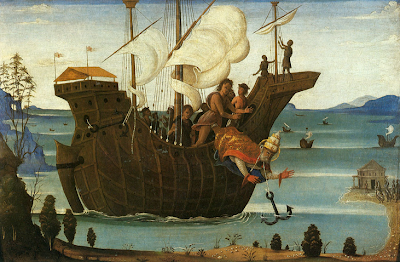What do you suppose we would do if we knew the day and hour of Jesus' coming? Would it change our lives in any significant way if we knew when He was coming? Would we live our lives in watchful expectation of His return, making the most of the time we have, hearing His Word, confessing our sins, receiving the Blessed Sacrament, spreading the Gospel? Or would we procrastinate, figuring we’ve got plenty of time to get things in order before He comes? Would we live as if God mattered the most, or would we act as if we mattered the most? Would we devote more time to the things of God, and less time to selfish interests, if we knew the exact time and day of Jesus' coming? Or would we figure that since we know the day, then we’ve got plenty of time before then? Would we use that bit of knowledge for our own benefit or for the benefit of those around us?
It surely would be convenient, wouldn’t it? – like knowing the exact day and time of your own death. We could plan accordingly. We could get our calendars in order. We could make sure everything was ready. If you are a procrastinator, like so many of us are, you could push off thinking about such things until the last minute. You could get your partying out of the way. You could eat, drink, and be merry. You could do all those things you wanted to do, before the big day came.
But as that day and hour drew near, I suspect anxiety and panic would begin to take over. We would try in vain to get the house in order before the Master comes through the front door, rather like children trying to get things back in order before their parents get home. Most likely knowing the day and the hour would only result in false security and complacency. And in the end, it probably would result in unbelief, because after a while we’d think that we’ve got everything under control, and the idea would set in that maybe that last day won’t come, after all.
No, it’s best to plan in accordance with Christ’s words, “Therefore you also must be ready; for the Son of man is coming at an hour you do not expect.” That’s the best advice for these days: be ready.
___________________________________________
Painting: "The Last Judgment"
by Frans Francken the Younger (1581–1642)
_-_The_Last_Judgement_-_WGA08203.jpg)



_-_James_Tissot.jpg)
.jpg)






